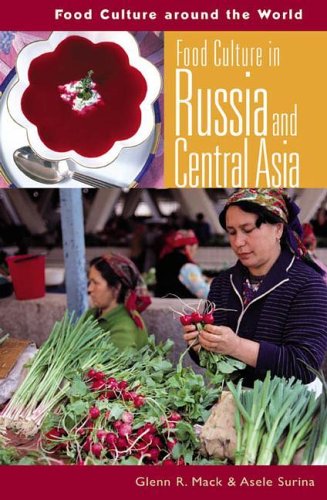

Most ebook files are in PDF format, so you can easily read them using various software such as Foxit Reader or directly on the Google Chrome browser.
Some ebook files are released by publishers in other formats such as .awz, .mobi, .epub, .fb2, etc. You may need to install specific software to read these formats on mobile/PC, such as Calibre.
Please read the tutorial at this link: https://ebookbell.com/faq
We offer FREE conversion to the popular formats you request; however, this may take some time. Therefore, right after payment, please email us, and we will try to provide the service as quickly as possible.
For some exceptional file formats or broken links (if any), please refrain from opening any disputes. Instead, email us first, and we will try to assist within a maximum of 6 hours.
EbookBell Team

0.0
0 reviewsRussia and the newly independent states of Central Asia are struggling to reassert or create national identities and are receiving fresh attention from the West. After decades of oblivion, the vast Eurasian continent is once again divulging its intense cultural heritage and foodways to the international community. The diversity of food cultures within the former Soviet Union, with more than 100 distinct nationalities, is overwhelming, but this book brilliantly distills the main elements of contemporary cuisine and food-related customs for students and foodies. Vibrant descriptions of the legacy of the Silk Road; the classic foods such as kasha, pirogi, non (flatbread), pickles, and shashlyk (shish kebab); the over-the-top Moscow theme restaurants; and meals at the dacha and tea time are just some of the highlights.
Russia and the newly independent states of Central Asia are struggling to reassert or create national identities and are receiving fresh attention from the West. After decades of oblivion, the vast Eurasian continent is once again divulging its intense cultural heritage and foodways to the international community. The diversity of food cultures within the former Soviet Union, with more than 100 distinct nationalities, is overwhelming, but Food Culture in Russia and Central Asia brilliantly distills the main elements of contemporary cuisine and food-related customs for students and foodies. Vibrant descriptions of the legacy of the Silk Road; the classic foods such as kasha, pirogi, non (flatbread), pickles, and shashlyk (shish kebab); the over-the-top Moscow theme restaurants; and meals at the dacha and tea time are just some of the highlights.
After centuries of contact and conflict among peoples of Eurasia, Russian and Central Asian cuisines and culinary cultures have much in common. To understand one, the other must be considered as well. Russia and Central Asia cuisines share many ingredients, dishes, and customs. This volume strives to emphasize the evolving and multifaceted nature of the food cultures. Readers will be able to appreciate the ingredients, cooking methods, and traditions that make up the Eurasian foodways.